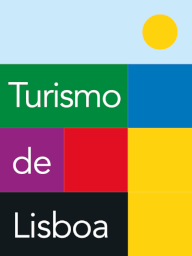
Only in Lisbon
In this garden leisure plus nature equals mathematics
For those who walk by Campo Grande it may go unnoticed, but around the 11 hectares of the renamed Jardim Mário Soares, there is a collection of games dedicated to mathematics.


For those who walk by Campo Grande it may go unnoticed, but around the 11 hectares of the renamed Jardim Mário Soares, there is a collection of games dedicated to mathematics.
The suggested route starts in the north wing of the park, between the tennis courts and McDonald's, where there are four concrete benches. The benches are dedicated to abstract games, including the medieval Alquerque and the contemporary Hex, or even the Mancala, from Africa, considered the oldest in the world.
Still on the north side of Campo Grande is Ames' Room. An immense concrete cube, with a checkered floor and walls. The challenge was named after the North American Albert Ames Junior, an optics scholar. In short, when you look at another person through a hole in the wall, you have the impression that they increase and decrease in size.
The third stop on the tour is on the south side, on the lake in front of a gym you have the Seven Bridges of Könisberg, a province whose geographical situation is an equation in itself. The territory, now on the border of Russia and Ukraine, once belonged to Poland and the German Empire. It was during this period that the Swiss mathematician Leonhard Paul Euler solved the challenge involving the city's bridges. There was a river and some islands in it, connected by bridges. The challenge was to tour Könisberg crossing all the bridges, but without crossing more than once over them.
The fourth stop is further ahead: the Loxodromic is a curve that represents the spherical shape of the Earth on the flat surface of a map. A crucial work developed during the period of the Great Navigations, and a method developed by Pedro Nunes, considered the greatest Portuguese mathematician.
The last part of the tour starts at Entrecampos square towards the beginning of the route: a walk through time booking down at plaques on the pavement, which tell the history of mathematics through the years. A kind of hall of fame of numbers, which begins in Babylon, two thousand years before Christ, and ends at the beginning of this century. Worth a visit.
By Álvaro Filho
